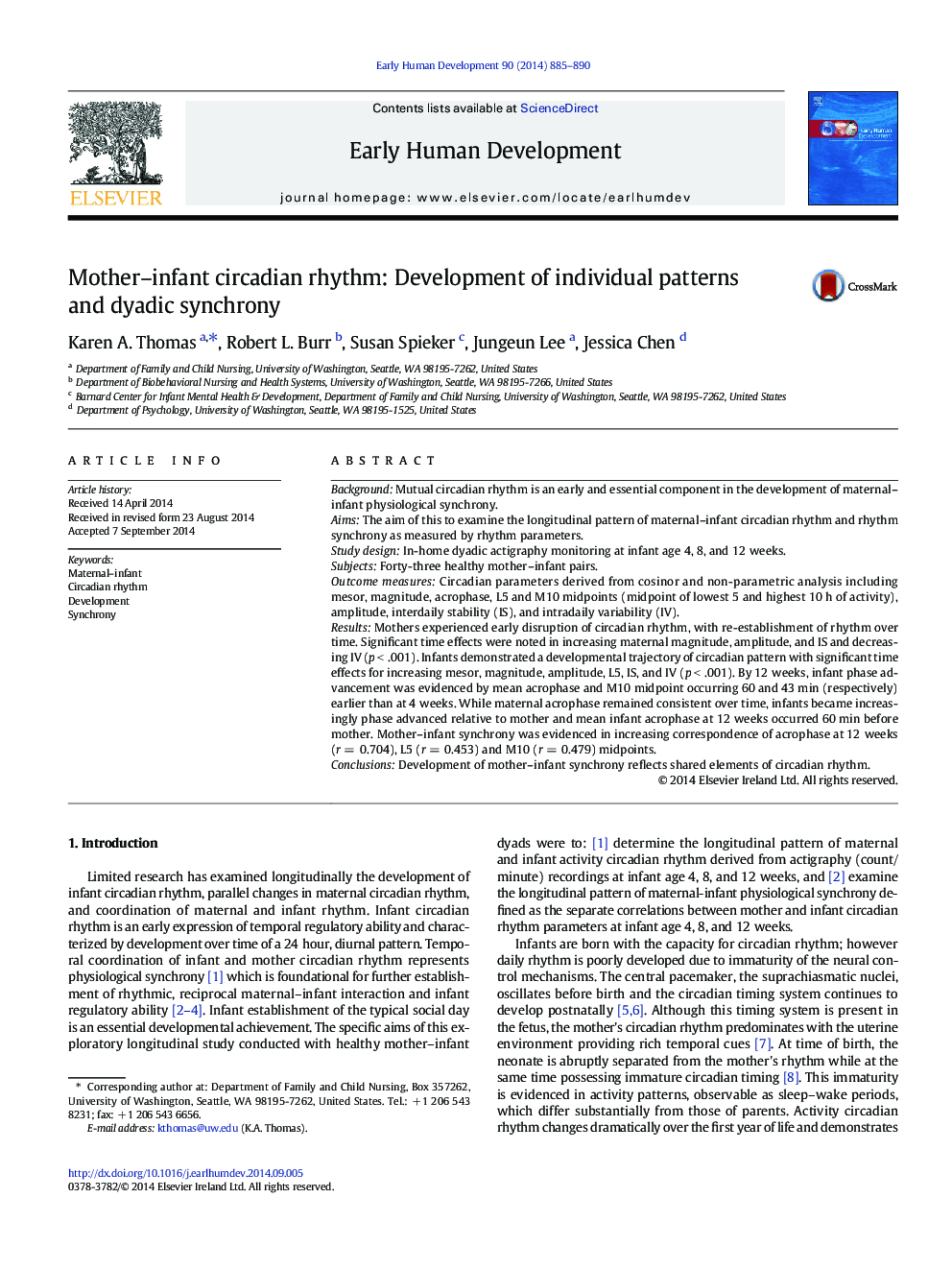| Article ID | Journal | Published Year | Pages | File Type |
|---|---|---|---|---|
| 6171825 | Early Human Development | 2014 | 6 Pages |
â¢Increasing strength of infant activity circadian rhythm development occurs between 4 and 12 weeks of age.â¢Maternal activity circadian rhythm is disrupted in the early postpartum then stabilizes.â¢Maternal-infant circadian timing is increasingly correlated; however infant acrophase is phase advanced in relation to mother.
BackgroundMutual circadian rhythm is an early and essential component in the development of maternal-infant physiological synchrony.AimsThe aim of this to examine the longitudinal pattern of maternal-infant circadian rhythm and rhythm synchrony as measured by rhythm parameters.Study designIn-home dyadic actigraphy monitoring at infant age 4, 8, and 12 weeks.SubjectsForty-three healthy mother-infant pairs.Outcome measuresCircadian parameters derived from cosinor and non-parametric analysis including mesor, magnitude, acrophase, L5 and M10 midpoints (midpoint of lowest 5 and highest 10 h of activity), amplitude, interdaily stability (IS), and intradaily variability (IV).ResultsMothers experienced early disruption of circadian rhythm, with re-establishment of rhythm over time. Significant time effects were noted in increasing maternal magnitude, amplitude, and IS and decreasing IV (p < .001). Infants demonstrated a developmental trajectory of circadian pattern with significant time effects for increasing mesor, magnitude, amplitude, L5, IS, and IV (p < .001). By 12 weeks, infant phase advancement was evidenced by mean acrophase and M10 midpoint occurring 60 and 43 min (respectively) earlier than at 4 weeks. While maternal acrophase remained consistent over time, infants became increasingly phase advanced relative to mother and mean infant acrophase at 12 weeks occurred 60 min before mother. Mother-infant synchrony was evidenced in increasing correspondence of acrophase at 12 weeks (r = 0.704), L5 (r = 0.453) and M10 (r = 0.479) midpoints.ConclusionsDevelopment of mother-infant synchrony reflects shared elements of circadian rhythm.
